Hi-Tech 1/48 Vautour IIN
Though largely unknown today, the Vautour series of all-weather fighters, bombers and recon aircraft were among the outstanding products of the French aviation industry 60 years ago, so good that it took a political decision on the part of the United States to kill the airplane. Almost forgotten in the country where it achieved its greatest fame, the Vautour was crucial to the Israeli victory in the Six Day War.
In July 1951, the Armee de l-Air issued a requirement for an advanced warplane capable of undertaking the all-weather interceptor, tactical attack and high/low-level bomber roles. SNCASO, which had already created a "Vautour I", the S.O.4000, which was radically underpowered and aerodynamically "first generation", decided that drastic redesign could transform the S.O.4000 into a model that could satisfy this requirement. The result was the S.O.4050 "Vautour II" project. The redesign included swept wings, wing-mounted engines, and the only other "bicycle" landing gear to be used operationally by any airplane other than the Boeing B-47. The S.O.4050 was successful, and 3 prototypes were ordered, according to the three roles required. The sub-types, which possessed 90% commonality, were designated Vautour A, a single-seat tactical strike aircraft; the Vautour B, a 2 seat medium-range bomber; and the Vautour N (nuit- night, a 2-seat all-weather interceptor.
Prototype 001 was built as a two-seater, though it was not an actual "N" prototype. The first flight was October 16, 1952, piloted by Jacques Guignard, chief test pilot of SNCASO, at Meulan-Villaroche air field. In May 1953 it was equipped with the 6,175 lbs. thrust Atar 101C.1 engines. Flight tests led to the addition of a ventral fin, which became standard for all later Vautours. On its thirtieth flight, June 30, 1953, Vautour-001 became the first two-engined, two-seat aircraft to exceed the speed of sound in Europe. The Vautour-001 was revealed in flight to the public at the 1953 Paris Airshow, where it demonstrated a climb of 34 degrees to 43,000 feet, and in descending, broke the sound barrier for the first time in public in Europe.
In late 1955, the Armee de l'Air issued an initial order for 480 Vautours: 300 IIA srike aircraft, 40 IIB light bombers, and 140 IIN all-weather fighters. Unfortunately, budget limitations and political factors intervened to cause a drastic cut in orders, reducing the initial order to 360 aircraft - 220 IIA, 100 IIN, and 40 IIBs. Competition among the French manufacturers, created a domestic political fight over what was the right place to invest: either in proven products, such as those of Dassault - producer of the Mystere IVA, then developing the Super Mystere and designing the Mirage - or to risk purchase of an "unproven" aircraft in such quantity.
The internal political debate was "solved" by the United States. The Americans, who concentrated on building heavy bombers and fast fighters, were not interested in seeing the success of a European multi-purpose aircraft which could endanger their control over the western export market. At about the time that the debate broke out about the number of Vautours to be produced, the U.S - through the Military Assistance Program - offered France an immediate delivery of 200 Republic F-84Fs - 150 fighter-bombers and 50 reconnaissance RF-84Fs - for what would today in the world of the WTO be considered "dump" prices. The bargain was quickly accepted by a financially-pressed French government that wanted to cement relations with the U.S. following the debacle of the French defeat in Indochina. Later, the U.S. provided France with the attack version of the F-100 Super Sabre - 88 F-100Ds and 12 2-seat F-100Fs - which cancelled the need for a French strike variant of the Vautour. With these moves, the United States prevented mass production of the Vautour IIA, which was under consideration for adoption by several NATO governments at the time. Final orders for the Vautour decreased to 140 Aircraft, including 30 IIAs, 40 IIBs, and 70 IINs. Who says politics never trump technology?
The Vautour would see all of its combat service with the Heyl'ha Avir, the air force of the Israeli Defence Forces, where it would perform spectacular - albeit virtually-unknown - missions before the Six-Day War, where it would provide the deep-strike capability of the IDF that created the circumstances for the overwhelming Israeli victory.
From 1958 to 1966, the Arab-Israeli conflict was primarily between Israel and Syria, with its peak coming over the Syrian attempt in 1962-65 to divert the Jordan River sources from their natural path; the basin of the Sea of Galilee is Israel's most important water reservoir; to this day, failure to resolve this problem is the core of the dispute between Israel and Syria, despite public concentration on return of the Golan Heights. During this period, Heyl'ha Avir was used as "flying artillery" to respond and to attack Syrian positions, and the Vautours participated in various operations, during those years, including photo-Recon sorties over the region between 1959-65; day and night interception missions between 1959-64; and strikes on Syrian targets, known as "the war of the water sources", beginning 1962; additionally, the Vautour IIN was increasingly modified to fly operational sorties as an electronic warfare platform, finally being removed from the all-weather fighter role in 1964.
One of the most daring Vautour missions during this period was a night photo-recon sortie into Syria on August 25-26, 1964, to photograph the Syrian base at El-Maza outside Damascus. Operation "Battle Cry" was a plan for a night attack on Arab airfields. A Vautour IIBR took off at 2220, August 25, but returned due to bad weather and faulty navigation without performing the mission. At 0120 on August 26, Vautour IIN "66" took off to complete the mission. Flying low in full moonlight, it arrived over El-Maza, where the crew attempted to count the Syrian aircraft visible on the ground. Unable to agree on the count between pilot and navigator, they decided to make a final low pass to get a good count. At the same time the Vautour made its approach, a Syrian transport was on approach. Mistaking the Vautour for the transport, the Syrian air controllers ordered the Israeli aircraft to land. The crew touched down, ran along the runway as they counted 15 MiGs parked alongside, then roared back into the air. Finally alerted, the defenses opened up but missed the Vautour, which climbed to 20,000 feet and continued its mission to photograph Damyr, Beirut and Riek airfields in Lebanon.
The Vautour saw its crowning achievement in Operation Moked, the Israeli air strike on the first day of the Six Day War. Operation Moked had its roots in the early 1950's, when it was determined that a preemptive strike on Arab airfields was the only move for an air force that was constantly inferior in quantity in comparison to its enemies. The full operational scheme was developed in 1965 by LCOL Yaakov Nevo, head of Operations, and his assistant, MAJ Rafi Sivron. Operation Moked envisaged a first strike on Egyptian, Syrian and Jordanian air bases, and required the use of every operational aircraft in the Israeli inventory. It was literally a "throw of the dice," inasmuch as - if the Arabs got wind of what was coming and manned their defenses properly - the majority of the IDF/AF could be lost deep in enemy territory at the outset of the war. After the plan was accepted in 1965, every squadron of the IDF/AF rehearsed their role in the coming operation for the next two years. Operation Moked involved attacks on 20 airfields in three countries at the outset, in four "range circles" built around the capabilities of specific aircraft in the inventory. The furthest circle was Upper (i.e., southern) Egypt, and there was only one airplane which could reach these bases, where the Egyptian strategic air forces with their Tu-16s were based: the Vautour.
Targets for the Vautours in the first wave attacks on June 5, 1967, were the home bases of the TU-16 heavy bombers at Bany-Suef, and the IL-28 bombers at Abu Sweir. Each srike package consisted of a two-seater - IIN or IIBR as leader/navigator, and two or three IIA single-seaters. The attacking aircraft were armed with 8 runway-piercing bombs. The first wave flew to their targets at an altitude of 100 feet AGL, at a speed of 450 knots The return from targets was at nearly 40,000 feet, so the attackers would have the range to get home. In addition to their bomb load, the Vautours carried large 1,300 liter external fuel tanks. The attacks included two bombing passes of bombing and two to three strafing passes, depending on flak opposition. Each attack lasted 5-7 minutes over the target. The 18 Vautours completed their missions with no casualties, though one had aborted because of a technical fault. The two main Egyptian bases suffered severe damage to their runways, with most of the Tu-16s and Il-28s destroyed. No other aircraft in the Israeli inventory could have carried out the missions. In the second wave attacks, the Vautours were able to surprise the Egyptians again by attacking Luxor Air Base, where the surviving Tu-16s had sought shelter. With the conclusion of this mission, none of the Arab countries had any aircraft capable of mounting heavy bombing missions against Israel.
On June 6, four Vautours escorted by four Mirages went back to Dumayr. Capt. Ben-Tzion Zohar, who flew the Number Three Vautour - number "66" - recalled: "We were sent up to the attack in the noon hours. On the previous day, another flight from our squadron had attacked H-3, but the results were not satisfactory, and we were sent to try and put a more permanent stop to the base's operation. We flew very low and tried to locate the 'oil road' on the Jordanian- Iraqi border, which was perpendicular to the direction of our flight. We saw a tremendous amount of military vehicles on the border - an entire division's worth, scattered all over the terrain.
"At H-3, we pulled upward in order to enter the bombing run, and suddenly there were Hunters inside our formation. It turned out that the Hunters had been on patrol duty, high above the base, and were in the process of changing shifts with their replacements when we arrived. The first Hunter landed - and one of us strafed him and blew him off the runway. At that moment Number Two informed the leader that another Hunter was on top of him. I had come out of a bombing run when Number Two decided that he couldn't take the Hunter and said to me on the radio: 'Three, I'm out, you take him'.
"I started chasing the Hunter and slowly closed in on him. At a certain point he pulled up. I pulled up after him, only to discover that my sights were in bombing mode. I was still messing around with the sights when the Hunter entered my line of fire. The sun lit him from the side. Instinctively, I shot off a burst from very close range.
"After firing, I pulled into position above him and prepared to sit on him again. All this time, I was still heavy with bombs and fuel tanks. The Hunter continued to turn gently, gradually lowering its nose, and - from a height of 200 feet - rammed straight into the ground. Since I hadn't noticed any prior explosion - it was later surmised that the pilot may have been hit directly by the burst I had shot. The other Vautours completed the bombing runs and turned to strafing.
"I could now finally devote myself to bombing the airfield. It felt like a firing range: the AA was relatively light and there was no sensation of danger. At the end of my run, a MiG-21 - the only one in the air - went after me. He dove down at me at very high speed, and one of the Mirage pilots shouted at me over the radio: 'let go of him... leave him alone... I'm taking him'. I had no problem with that."
Captain Ben-Tzion Zohar's victory was the only one ever scored by an IDF Vautour, though Vautour 66 carried markings for three Egyptian aircraft destroyed as a result of its excellent navigation in targeting the strike force in one mission.
Immediately following the Six-Day War, the condition of the Vautours was bad. Four had been severely damaged and the others were in need of maintenance. Increasingly patched together with chewing gum and baling wire, the 14 surviving Vautours provided the only long-range strike interdiction capability of the IDF/AF during the "War of Attrition," (also known as "The 1,000-Day War") during the three years following the Six Day War. The arrival of A-4 Skyhawks at the end of 1967 placed the Vautours in secondary attack roles that saw them mostly assigned to less defended targets. Long range interdictions or strike attack became rare as the new American aircraft went into action. As Skyhawks replaced the Vautours, the Vautours' navigators became the nucleus of the "Weapon System Operators" for the soon-to-be-supplied F-4 Phantoms, and left for conversion in the U.S.A in 1968. So it happened that a new generation of Vautour crewmen had to be trained "on the job". In 1968-70, the Vautours continued in the photo-recon and electronic warfare roles until replaced by Phantoms in 1970. The last Vautour was withdrawn March 1972. Ten were transferred to Refidim and El-Arish AFBs, where they were used as decoys during the Yom Kippur War in 1973. In twelve year's hard service in Israel, the Vautour had proven it was fully equal to any of its contemporaries, and superior to most.
This kit by Hi-Tech (one of the most mis-named companies ever to exist) is the only 1/48 kit of the Vautour IIN. The single-seat version was also released by them.
It appears the molds were never polished or smoothed before use, since the surface of the injection molded plastic parts could be used by a special effects model company as a stand-in for the surface of the moon. Not only that, but the joining surfaces are very uneven. Out of the box, the resin cockpit and landing gear parts will not fit in the fuselage halves and allow them to be closed up; if you do not own a Dremel Tool, do not buy one of these kits. The seats were so poorly-designed and constructed that I opted for two resin-molded seats from an aftermarket company. The vacuformed canopy is acceptable, but be very aware of the fact you only have one, so deal with it very carefully. While the kit provides photo-etch instrument panels, there is no provision for the instrument faces.
Construction began with hack sawing the plastic parts of the tree trunk-thick sprues, then sanding the mating surfaces so they were smooth and straight.
Turning to the resin interior parts, a quick test-fit demonstrated that they didn't fit where they were intended to go. The solution to this was to dremel out the fuselage halves in the area where the resin parts were intended to go, until about half the thickness had been ground away. Then the cockpit tub and wheel wells were dremeled, cutting away the mold blocks on all three parts and thinning the roof of the forward wheel well until I could see light through it. The floor of the cockpit tub was ground away until it was only "just there," and about 1/16' was ground off the sides of the tub. Finally, the parts fit! I then painted the cockpit tub black, and highlighted it with drybrushed Model Master Aluminum, then glued it into position. I glued the wheel wells in position, then glued the fuselage halves together. I dremeled the centerline joint until it was smooth.
The wings were glued together, and sanded down. The engine nacelles were assembled; fortunately the outrigger wheel wells fit here better than their counterparts in the fuselage. I attached each wing and engine nacelle. The wings are supposed to butt-join the fuselage. I opted to drill some holes and use some plastic dowel from Evergreen to make attachments and strengthen the joint. Once the wings were attached, I applied copious amounts of Ambroid hot glue to the joint to soften the plastic and get as much of the surfaces glued together as possible.
I then puttied all the joints on all the sub-assemblies; the area of the upper wing where the engine nacelles attach required quite a bit of putty to insure that the surface would be smooth when sanded down, since there was a considerable "dip" on that area of the engine nacelles. I used Bondo scratch-repair putty for cars, which is a thick putty that doesn't shrink as it dries. When everything had dried and the putty was fully set up, I attacked the model with sanding sticks to smooth out the joints and sand down the entire outer surface of the model to something approximating "smooth" - it was at this point that I decided to do a camouflaged Israeli airplane, since I doubted I would ever get the model smooth enough for a natural metal paint job - at least not without far more effort than I was at that point willing to invest in this increasingly-demoralizing project. Once everything seemed right, several coats of Mr. Surfacer 500 were applied and sanded off and reapplied in order to get the model as smooth as I could.
I found some photos of Number 66 at the end of its service, when it had been repainted in the modern Israeli camouflage scheme, which I did. The decals came from the decal dungeon since the kit decals were unusable.
While the description here of the construction of this model sounds very straightforward, this was done over the course of about 13 months, of which maybe 30-35 hours were spent actually working on the model. It spent at least six months in its box in the stack over in the corner I keep for doorstops, while I contemplated whether it was going to be finished on the workbench or in the trash bin. Of the remaining 6-7 months, I would finish one process and then let things sit for a month or so before attempting the next step. This is what I mean about a "demoralizing model" - one that does not inspire excitement to proceed, but merely a desire to have it over and done with, regardless of how that happens.
As far as my personal recommendation is concerned, if you have a really bad enemy who you want to exact revenge on, give them this kit as a gift. This was one of the roughest, toughest models I have ever done, and the fact it sits there looking as good as it does in these photos, rather than lying in bits and pieces in the local landfill, is truly a "triumph of the will," a victory of mind over matter. If you reallyreallyreally just gotta have a model of this under-rated airplane that provided outstanding service in difficult circumstances, it can be done; but you should plan on some "industrial strength modeling" to accomplish it.
This model was completed 11 years ago. I can still feel the pain.
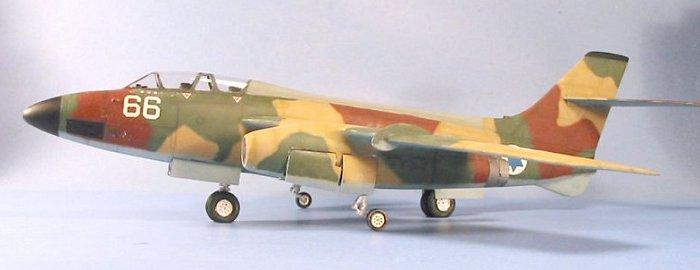
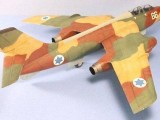
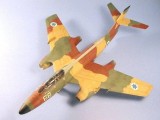
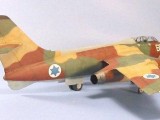
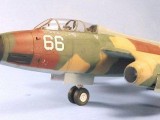
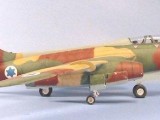
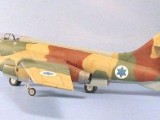
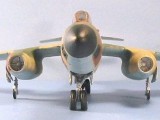
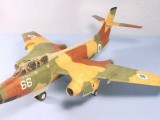
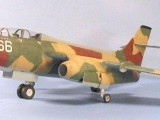
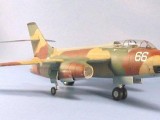
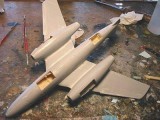
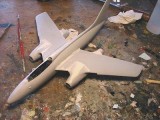
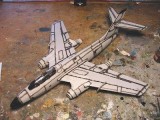
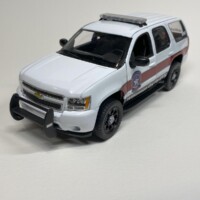
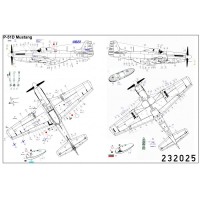
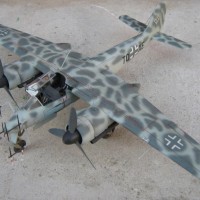
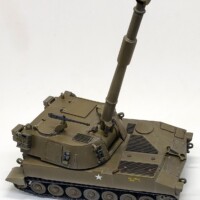
Turned out well in the end Tom. Thanks for the in depth background on the aircraft.
This was a very timely posting for me. I just started a 1/72nd model of the same aircraft. I've already hit a little frustration just figuring out how to piece together the cockpit.
beautiful job tom..i used to hate these Israeli desert schemes then suddenly feel in love with them a few years back but then Audrey Hepburn used to turn me off till i turned 55 then suddenly i saw how gorgeous she was...funny how tastes change...i saw the kitty hawk banshee in the pipeline by the way...keep it going man
Sounds like an up hill struggle but you got there and it looks like it was worth it, i had a Hi-tech kit once that was one of the very few models i didn't mind letting go to a new home for much less than i paid for it
plus the other reason is i try not to do Dremel.
Nice work Tom
Mark
Great build , Tom . Really enjoyed the history of the Vantour , but really liked the build . You show what can be done to turn a sow's ear into a silk purse ! Keep up the great work .
Perseverance obviously paid off once again. I think it looks terrific!
Really great job for this french jet with israel colors ! félicitations !
Tom,
Great info on this aircraft and another very nice build. Did not know much about this airplane. I really like the scheme.
Outstanding work Tom. Really enjoyed the in depth history of the aircraft and the reminisces of the pilot.
Cool plane Tom, kind of looks like a B-47 too.
Never heard of this aircraft before now, reminds me of a B-66.Your narrative was excellent and your description of "Hi-Tech" as a mis-named company had me laugh out loud! Nice build, I always like those camo paint jobs.
Nice! I didn't even know there was one in 1/48! As bad as it is, I may still look for one to add to my growing French Fleet! (Hopefully they had some camouflaged ones, sounds like this kit would be a chore to get a nice NMF!) There was one flying as a warbird in France until the late 90's, but it has bee dormant for a while. You did forget to include the Harrier, Yak-28 (similar to the Voutour) and B-52 (it is a bicycle arrangement) in the list of production planes with bicycle landing gear though.
Congratulations on surviving the build and on a job well done!
I also forgot the U-2 has a bicycle gear!